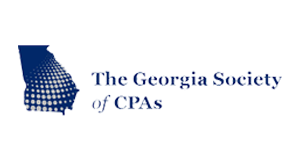Most people believe that Roth retirement accounts don’t have any required minimum distributions (RMDs). Usually that’s the case. But, there are Roth Account RMD rules that most people don’t know—two kinds of Roth accounts actually do have RMDs.
Suppose you have one of these accounts, and you don’t like this RMD rule. Are there ways around it?
Traditional Vs. Roth: What’s the Difference?
Before we dive in, let’s review the basic difference between traditional retirement accounts and Roth retirement accounts:
- A traditional retirement account is money you invested before paying taxes on it. Hopefully that money grows—spectacularly. Then, in retirement, when you start taking distributions, those withdrawals are taxable at whatever tax bracket you happen to be in.
- A Roth retirement account is where you put money into your account after paying taxes on it. That money then grows tax free. At retirement, when you take that money out, you don’t pay additional taxes.
With Roth IRAs there are two rules you must abide by. First, you need to have your Roth IRA for at least five years. Second, you must be over 59 and a half years old when you start taking withdrawals. Again, as long as you follow those two rules, your distributions are tax-free.
You can see the appeal of a Roth account. You get the money in there, and hopefully it keeps growing and growing—all tax free!
The Issue of Required Minimum Distributions
But there’s another advantage: With most Roth accounts, there are no required minimum distributions. No one forces you to take your money out. Thus, you don’t lose the “tax freeness” of all that growth.
Traditional IRA accounts and traditional thrift savings plans (TSPs) are different. They do have required minimum distributions. Most see this as the government’s way of finally “getting theirs.” They let you postpone paying taxes for a time, but eventually they make you take distributions so that you finally have to pay taxes on all your earnings.
Why do most Roth accounts have no required minimum distribution rules? Perhaps the official thinking behind Roth accounts is that since we can’t get any tax revenue from those investments, we’re not going to require anyone to withdraw that money.
However, there are two kinds of Roth accounts where this is not the case–where distributions are required.
One is the Roth TSP. Or—if you’re not a federal employee—the Roth 401(k) inside of your employer’s retirement plan. With these accounts, once you reach the age of 72, the government forces you to take a minimum distribution just like you have to do from a traditional retirement account.
Again, many people don’t want to be forced to take a required distribution, especially from their Roth account, where their money is growing tax-free. So, what’s the fix to this?
Fixing the RMD Status of Roth TSPs and Employer Plans
To get around this requirement, you have to move your money outside of the TSP. If you do so—by moving the money from your traditional TSP to a traditional IRA, or moving your Roth 401(k) money to a Roth IRA, then you are only required to take a distribution from the traditional IRA and not from the Roth IRA. The simple move alleviates your need to take an RMD from a Roth account.
It should be noted that there is a rule within the TSP that if you’re over the age of 72, and you’re still working, you don’t have to take an RMD from the traditional or the Roth. But if you’re retired, and you’re 72 or over, then you must take distributions from both—the traditional and the Roth.
RMD and Inherited Roth IRAs
What’s the second type of a Roth account that requires you to take distributions? It’s a Roth IRA you inherited from someone else.
Are there ways around this? It depends.
If you inherit a Roth IRA from your spouse, and you put it in an inherited IRA account, you will be required to take RMDs from it. However, you have another option. You can roll that inherited Roth IRA into your personal Roth IRA. Once the money is in your personal Roth IRA, there are no RMDs. That’s how to get around it.
Now, let’s say you inherit a Roth IRA from someone who is not your spouse. In this case, you are required to move those assets to an inherited Roth IRA, and there will be RMDs from it.
It used to be that you could take a small amount out and basically stretch those distributions out over 30 or 40 years. However, the recent Secure Act got rid of the so-called “stretch IRA.” Now, there is a 10-year limit. You have to get all the money out of that inherited Roth IRA—or inherited traditional IRA for that matter—within 10 years. The IRS came out with new instructions saying that you actually have to take a required minimum amount out each of the first nine years, and then take the balance out in year 10.
Some people think I’ll take 10 equal payments every year for 10 years. That may be a good strategy if you’re dealing with a traditional IRA because those payments are taxable. But remember: Roth IRA distributions are not taxable. So, you may not wish to take 10 equal payments.
In short, if you are required to take distributions from an inherited Roth account, you have some wiggle room. If you don’t need the money to fund your lifestyle, and if it would be smart tax-wise to only take the minimum distribution for nine straight years, that would leave the majority of the balance in your Roth account where it could continue to grow tax-free. Then, in year 10, you could take out the balance. This would let you—to coin a new word—enjoy the “Roth-iness” of your Roth account for as long as possible.
In this scenario, you can’t really avoid RMDs. But you can use the system to your advantage to stretch out those distributions for as long as possible. Right now, that’s 10 years.
In a Nutshell
To recap: At age 72, Roth RMDs are required from a Roth TSP or from an employer-sponsored plan.
The second kind of account that requires distributions is an inherited Roth IRA.
The Benefits of Having an Advisor
If all this sounds complicated to you, perhaps you can see the wisdom of working with a financial advisor.
At Christy Capital, our specialty is federal employees and federal retirees. This is what we do day in and day out. We understand the bureaucracy of governmental agencies—and we know how to cut through the red tape.
This means we can help you with tricky retirement paperwork. We can keep you from making honest mistakes that are often a major headache to fix.
What’s more, we can help you determine how aggressive or conservative you want your investments to be. And when you inherit money—say a Roth IRA, as we’ve talked about here—we can help you understand the tax realities and implications of all your options. “Based on your situation, here are the three best choices you have…I’d recommend you take this action.”
The beauty of this kind of client-advisor relationship is you don’t have to learn all the tax rules for every conceivable situation. You have someone on your team that knows that.
One person put it like this: “It’s like you’re the CEO of your household, and Christy Capital functions as your CFO. They pull together the information, and make recommendations. Ultimately you make the decision.”
So, whether it’s inherited money, taking a large Roth distribution to buy a house, or delaying Social Security and living off distributions from your accounts instead, there are all kinds of scenarios in which we can help.
If that sounds good to you and you’ve got $400,000 or more in your TSP account, please reach out to us.
In the upper right-hand corner, you’ll see a button that says Talk with an Advisor.
Click there and send us a message. Or, if you want to talk with an advisor now, our number is (866) 331-7749.
At Christy Capital, we take the mystery out of retirement. We’re here to help you get you ready for what many discover is life’s most fulfilling chapter.







